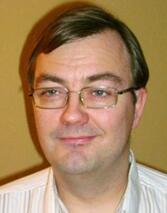 题目:High Magnetic Fields in Nijmegen–Quantum Matter to its Extremes
题目:High Magnetic Fields in Nijmegen–Quantum Matter to its Extremes
报告人:Ulrich Zeitler教授
荷兰奈梅亨高场磁体实验室、荷兰奈梅亨大学理学院
时间:2018年11月15日(周四)下午3:30
地点:国家脉冲强磁场科学中心B206
报告摘要:
High magnetic fields are an extremely powerful tool to investigate, to control and to manipulate the quantum properties of matter. In this talk I will present some recent results in this domain obtained at the High Field Magnet Laboratory (HMFL, member of the European High Magnetic Field Laboratory) at Radboud University in Nijmegen, the Netherlands [1].
I will start the talk with a general presentation of HFML-EMFL, the high-field facility in Nijmegen with static magnetic fields up to 38 T (45 T in the near future). More specifically, I will present the status of our current and future magnets and the wide range of state-of-the art experiments offered to external users. This will be exemplified further by some recent research highlights on HFML’s three research pillars,Soft Condensed Matter and Nanomaterials, Correlated Electron Systems and Semiconductors and Nanostructures.
In the second part I will present in some more detail two examples where we show how electron-electron interaction can spectacularly influence the high field magneto-transport properties of new low-dimensional material systems: Transition-metal dichalcogenides (TMDs) and oxide-based heterostructures. First, I will show how the TMDs MoS2 and WS2 can be driven through different phases from insulator to metal to superconductor by means of ionic gating [1], see Fig. 1, and how the superconductivity is Ising-protected from magnetic-field induced pair breaking far beyond the Pauli limit. These experiments have been performed in collaboration with Justin Ye’s group from the University of Groningen.
Second, I will present our state-of-the-art electronic magneto-transport experiments at very low temperatures down to 60 mK and high magnetic fields up to 33 T [2], see Fig 2. They have been performed in collaboration with researchers from the RIKEN Center for Emergent Matter Science and the University of Tokyo. We were able to directly observe of an unprecedented sequence transition from between a composite fermion liquid and a Wigner solid formed either by electrons or composite fermions. These observations are a significant leap forward in our understanding of interaction-driven electronic phases in solids and may help us to apply new knowledge to future correlation-based quantum computation devices.
[1] www.ru.nl/hfml/; emfl.eu/
[2] J. M. Lu et al., A full superconducting dome of strong Ising protection in gated monolayer WS2, arXiv: 1703.06369.
J. M. Lu et al., Evidence for two-dimensional Ising superconductivity in gated MoS2, Science 350, 1353 (2015).
[3] D. Maryenko et al., Composite fermion liquid to Wigner solid transition in the lowest Landau level of zinc oxide, Nat. Comm. (2018), accepted, arXiv: 1707.08406 [cond-mat.mes-hall].
报告人简介:
Uli Zeitler是荷兰奈梅亨拉德布德大学理学院教授,研究方向为高磁场下的半导体和纳米结构。他曾在德国康斯坦茨和法国格勒诺布尔学习物理,并于1994年获得康斯坦茨大学的博士学位,论文方向为“极端量子条件下的二维和三维半导体电子传输”(在格勒诺布尔高磁场实验室中开展)。在荷兰奈梅亨和英国诺丁汉完成博士后,他被任命为德国汉诺威莱布尼兹大学的研究员和教学助理。2001年,他完成了关于“量子霍尔系统中电子-声子和电子-电子相互作用的实验”的任教资格论文。2002年,他以副教授的身份加入奈梅亨大学的奈梅亨高场磁体实验室(HFML),并于2017年晋升为正教授。
作为HMFL的科学家,Uli Zeitler除了研究高磁场中的半导体和纳米结构之外,也延伸到磁和超导领域,多次与该领域处于世界领先的科学家合作。研究项目包括诸如石墨烯和其他2D材料、氧化物异质结构、拓扑绝缘体和Weyl半金属(以上研究均为近期发现)以及传统研究项目,例如量子极限中的3D半导体、2D系统中基于高斯的异质结构、量子点和量子环。
热忱欢迎广大老师,同学来聆听讲座!